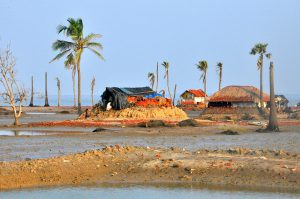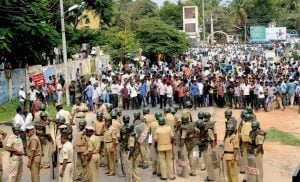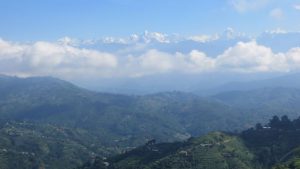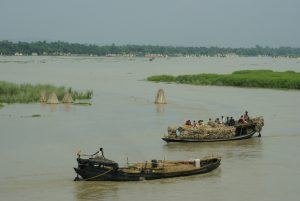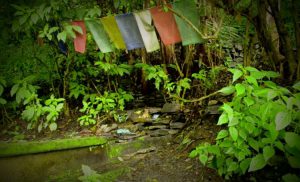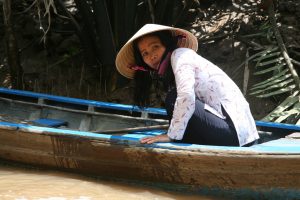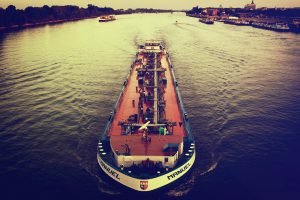The Gorakhpur Environmental Action Group (GEAG) in eastern Uttar Pradesh has been working on issues of sustainable agriculture and livelihoods, rights and interests of small and marginal and woman farmers, community health, training and capacity building since 1975. Unlike many non-profits based in big cities, GEAG is based in Gorakhpur city, which has a population of approximately 700,000. The city dominates the district with a much larger population, of almost 4.5 million people. Located in the mid-Gangetic plains and experiencing many of the challenges related to agriculture and badly managed urbanisation, Gorakhpur is a perfect case study for the challenges of the peri-urban — the areas of interaction between a city and its periphery. Many of these areas hold the answers to managing the impacts of climate change.
India Climate Dialogue spoke with Shiraz Wajih, President of GEAG, about peri-urban areas and their role in facilitating resilience in the face of climate change.
You have been working on agriculture and water bodies in the peri-urban area. What exactly does this mean?
Peri-urban areas are the zones of transition from rural to urban land uses located between the outer limits of urban and regional centres and the rural environment. These lands see a wide range of uses, such as water catchment areas, forestry, recreation, and productive farming, as well as offering a unique ambiance and lifestyle. Unfortunately, due to no clear policies from the national level to the local level, these areas have seen the greatest loss of biodiversity and vegetation, as well as land use changes.
Peri-urban areas are most often understood merely as places: firstly, as a transitional zone around a city and, secondly, as a zone of intense interactions, flows and linkages between urban and rural areas. When used in this sense, peri-urban refers to rural fringe areas surrounding cities that bear the spill-over effect of urban expansion. These areas provide the much needed land and water resources for urban expansion and serve as containers of urban waste.
However, there are several criticisms of place-based definitions of peri-urban. It is for this reason, perhaps that the word peri-urban should be used not so much in its narrow, geographical sense, but more widely as an analytic construct to study the relationships between urban and rural activities, processes and institutions.
![Peri-urban areas are best understood as zones of interaction between the urban and periphery [image courtesy GEAG newsletter]](/wp-content/uploads/2016/09/Farmers-market-GEAG-newsletter.jpg)
There is no official term like peri-urban in the government. Hence, it is not recognized as a space or social unit. That is the reason it is not served by municipality to provide basic services. Because of the proximity of peri-urban areas to the city and the related livelihood activities it is not a priority for departments dealing with rural development. Hence, these areas become nobody’s children, and thus no one bears responsibility for them.
How does the peri-urban area, especially its water bodies, impact climate resilience?
Peri-urban areas and its ecosystems provide various services for dealing with climate change impacts. In the flood and water logging affected regions (such as Goakhpur) the role of peri-urban spaces is particularly vital. Peri-urban agriculture and ecosystems help in in various ways.
They provide a buffer space by allowing open lands to maintain their vital natural functions such as drainage and water infiltration into the soil leading to decreased run off, thereby preventing floods and waterlogging in neighbouring constructed residential or commercial urban spaces.
They keep areas vulnerable to flooding free from development and construction and thereby preventing the creation of new flood zones upstream and downstream. They also help in diversifying and enhancing food and income sources of urban and peri-urban areas
Enhancing and maintaining agriculture and ecosystems like water bodies, orchards, green areas in the peri-urban area surrounding Gorakhpur city is central to building resilience to climate change for the entire urban area.
Cities like Gorakhpur have topography with multiple directions in water flow. It is not merely a north-south or east-west flow of one river that determines the direction of the waters. Therefore, drainage must be in many directions. The various water bodies of city spread in many areas provided a natural drainage system to the city avoiding situation like water logging. However, over a period of time, these water bodies and drainage channels have been severely encroached upon and concrete buildings have come up.
This has completely disrupted the natural flow and storage of storm water causing water logging to increase with every passing year. Climate change impacts are causing intense rain falls. The last three years (except for the last year) has seen record-breaking intense rain fall in 24 hours or 48 hours (with the average annual rain fall remaining the same) and such events result in flooding and prolonged inundation of various parts of the city.
![Waterbodies help manage water flow, but also regulate temperature of cities [image courtesy GEAG newsletter]](/wp-content/uploads/2016/09/GEAG-waterbodies-newsletter.jpg)
What is the role of small cities such as Gorakhpur in dealing with climate change?
Urbanization is a universal process but the migration from rural areas to urban set-ups is much faster in the smaller and secondary cities. Various studies have proved that the maximum inflows into urban areas are expected in the cities having population of approximately 1 million. This puts larger challenges before cities like Gorakhpur, which are already struggling with limited resources and infrastructure. Gorakhpur is one of the fastest growing cities in the mid-Gangetic region because of increasing frustration in agriculture (primarily decreasing net gains due to increasing input costs and weather uncertainties).
Can you describe the project you have been working on in this regard, the research you have produced, and the impact on the ground?
GEAG is currently working on a series of interventions, and part of some studies, such as:
- Developing methodologies for micro (ward level) planning of urban climate change resilience
- Helping marginalized farmers in peri-urban spaces to develop climate change-resilient farming and the conservation of open/green areas and water bodies
- Organising citizens of Gorakhpur for the conservation of ecosystems, primarily water bodies
- Developing viable models of decentralised sewage management systems in two peri-urban locations of Gorakhpur
- Scaling the learning in three flood affected cities: Jorhat (Assam), Bashirhat (West Bengal) and Saharsa (Bihar)
- Taking part in the national study on urban governance and vulnerabilities of children in the specific context of climate change involving the five cities of Shimla, Gorakhpur, Panjim, Indore and Guwahati
There has been quite positive result on the ground in terms of engaging poor and vulnerable communities in climate change resilience in the ward of Mahewa in Gorakhpur, and our efforts in strengthening resilient farming in peri-urban areas now involves almost 1,000 farmers belonging to small land-holding category. There is particular interest among women farmers. Both civil society and the media have responded well to ideas of climate change resilience.
How has the government and local administration responded to such initiatives?
There has been some impact, such as the recognition of climate change vulnerabilities, the establishment of a climate cell in the Gorakhpur Municipal Corporation (although it is not very active), providing services to peri-urban farmers, improved drinking water and toilet facilities in the project areas, conservation of the Ramgarh lake and the allocation of resources to in this regard. But the situation in city does not change unless there are clear directives from state government, which is needed. Also, climate change is still not institutional responsibility of any specific department and there are no clear rules and guidelines, which mean that these issues do not receive the priority they are due, and relevant action is either delayed or is not taken.
We have lost a huge number of water bodies in and around Gorakhpur in the recent decades. How do you see the future? Will this change?
The number of waterbodies in the city has shrunk from 103 in 1970s when I began my research on the issue, to 18 in 2012. This is really pathetic. The waterbodies are easy areas for encroachment and turning these into land by dumping of waste. It is important that these are saved. It is not only the water bodies in the city boundary but also those which are in the peri-urban areas need to be protected and conserved. Although, with the growing consciousness, citizens also speak in favour of conservation but the encroachers are powerful with political connections. Even if the existing rules are effectively implemented it will change the situation. The lack of political will and enforcement of prohibitive provisions is making the situation worse. This will go against the health and wellbeing of the city as well as its citizens.
![<p>Uncontrolled urbanisation – such as this construction in a lake – has led to the loss of waterbodies [image by GEAG]</p>](https://dialogue.earth/content/uploads/2016/09/Construction-within-lake.jpg)

